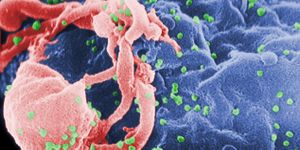
The ability to print almost anything in 3D has been a boon to almost every field of science. A 3D printer was shipped via cargo rocket to the International Space Station and a wrench was successfully printed based on instructions emailed to the crew. A father in Boston was able to fashion a prosthetic hand for his son on a 3D printer. A scientist in Rome has been able to recreate sedimentary stone for use in building homes and in Austin Texas a medical device company believes they are within ten years of being able to create a human heart with a 3D printer.
The potential for 3D printing of human tissue is limited however, by the huge costs involved and the tiny particles that are needed for most tissue applications. A team of researchers at the University of Texas at Austin's Department of Chemistry and Biochemistry may have a way to mitigate some of those issues. The team, lead by Peter B. Allen, Zin Khaing, Christine E. Schmidt, and Andrew D. Ellington, has published a paper in the American Chemical Society‘s ACS Biomaterials Science & Engineering journal titled "3D Printing With Nucleic Acid Adhesives." Their theory is that DNA is more than just a concept in the process of creating viable bio-materials. They believe that DNA can be used as an adhesive to bind together the components needed to create lab generated tissue or organs.
Up until now, it was only possible to create substances on a nanoparticle level. Nano-sized bio-prints are only theoretical, and cannot be carried into actual usage for larger objects like organs. The team came up with nanoparticles made of polystyrene and polyacrylamide that were coated with DNA. The DNA acted as a powerful adhesive and held these lower-cost materials together. Since DNA can interact in predictable ways with other strands of DNA, the researchers dubbed it "smart glue" and found it resulted in a colloidal gel that had shape stability. This colloidal gel was then used as the material in their 3D printer to produce objects that can actually be seen with the naked eye, and interacted with in such a way that does not necessitate a microscope.
Using the DNA-to-DNA interactions, the researchers were able to manipulate the gel without a microscope and show that it was a viable human cell growth environment. This is significant step forward towards the goal of growing actual full tissues in a lab. The team hopes that the colloidal gel they created will be a building block material for creating human tissue in the lab.
The four major findings that make the study groundbreaking are:
1. After extrusion through the 3D printer, the colloidal gel holds its shape.
2. Some control over the microscale structure results from the DNA binding of the particles.
3. Costs are "dramatically reduced through use of the DNA coating, and macroscale applications become viable.
4. Bio-friendly assembly of the material's matrix can host growing cells.
 The ability to print almost anything in 3D has been a boon to almost every field of science. A 3D printer was shipped via cargo rocket to the International Space Station and a wrench was successfully printed based on instructions emailed to the crew. A father in Boston was able to fashion a prosthetic hand for his son on a 3D printer. A scientist in Rome has been able to recreate sedimentary stone for use in building homes and in Austin Texas a medical device company believes they are within ten years of being able to create a human heart with a 3D printer.
The ability to print almost anything in 3D has been a boon to almost every field of science. A 3D printer was shipped via cargo rocket to the International Space Station and a wrench was successfully printed based on instructions emailed to the crew. A father in Boston was able to fashion a prosthetic hand for his son on a 3D printer. A scientist in Rome has been able to recreate sedimentary stone for use in building homes and in Austin Texas a medical device company believes they are within ten years of being able to create a human heart with a 3D printer. 








